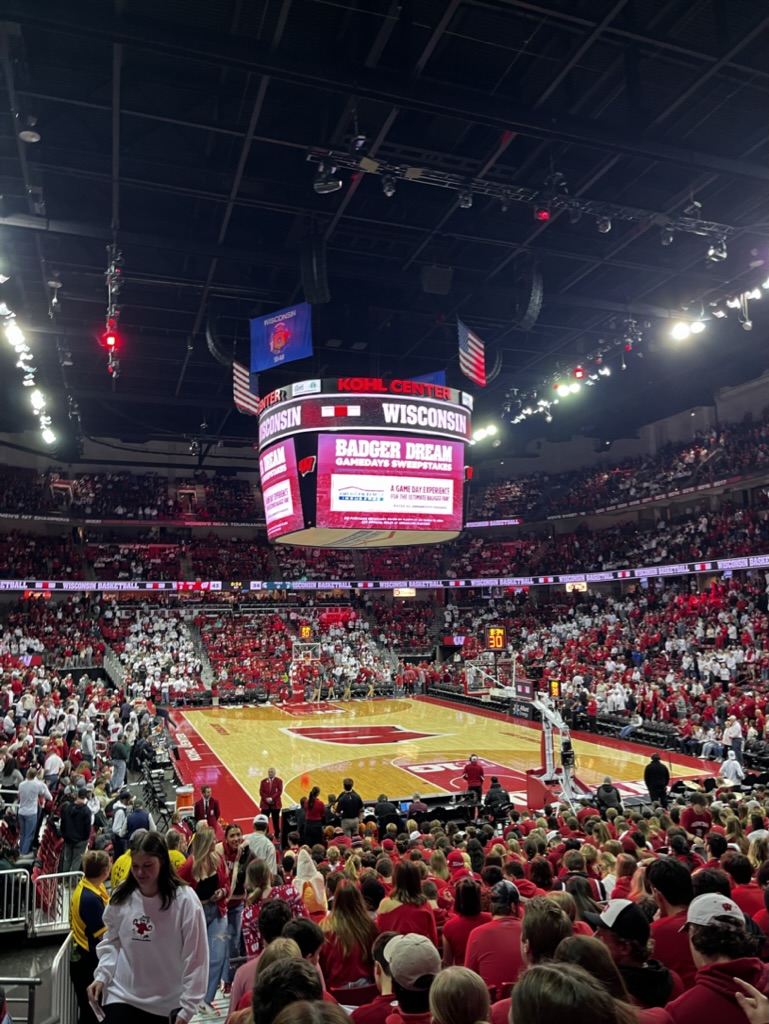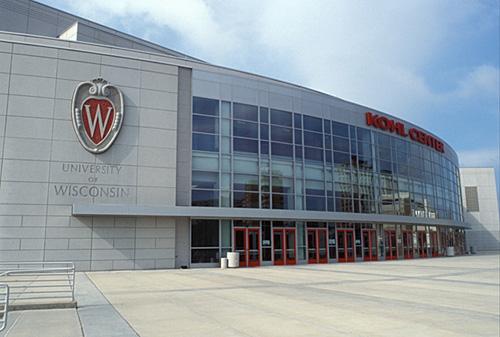As the triumphant Fighting Illini charged out of the Breslin Center Tuesday with their undefeated record still unscathed, any surviving sense of predictability in the Big Ten breathed its last.
ACC titan Wake Forest … swept aside. Gonzaga head coach Mark Few and his scrappy Bulldogs … leashed. Former swingman Pierre Pierce and the formerly red-hot Hawkeyes … chilled. The Badgers and their perilous cavern … charted. And now, Tom Izzo and his athletic Spartans … vanquished.
Tuning in to witness Illinois drop a game has become like watching uranium alpha decay — eventually it must happen, but the tedium and threat of cancer are too much to bear. Just for decorum, let’s take a look at what still rests on the Illini docket:
Indiana at Assembly Hall minor: a potential spoiler if the young and talented Hoosiers possessed a competent coach. Michigan at Crisler Arena: the Illini stars have more than enough experience playing in high school atmospheres. Wisconsin at Assembly Hall minor: improving Badger backcourt still a mismatch. Penn State at Bryce Jordan: an Appalachian blizzard seems the Lions’ only hope. Iowa at Carver-Hawkeye: if Pierce the police do charge, count the Illini still at large. Northwestern at Assembly Hall minor:
“Revenge of the Nerds” was just a movie, albeit a good one. Purdue at Assembly Hall minor: Keady’s hairpiece seems to have lost its magic. Ohio State at St. John Arena: it’s hard to imagine Illinois lulled in the final game of Big Ten play.
In the reckless world of college basketball, anything can happen. However, for Illinois to fall from the top spot in the conference standings, three things need to happen — not a likely series of events. Fans around the Big Ten hoops scene need to come to grips with the fact that the race for this year’s conference title effectively ended Tuesday night. But take heart, the situation could be worse. At least the Big Ten won’t prove a joke two seasons in a row.
Other than the inescapable fact that the Illinois juggernaut completely shattered any hopes of an exciting conference race, there’s little to dislike about this squad. Despite sporting a backcourt loaded with athletic talent, when it comes to driving the offense, the Illini guards share and share-alike. Posting an astonishing team average of 19.73 assists per game (compared to just 11.1 in the turnover column), guards Deron Williams, Dee Brown and Luther Head all register among conference leaders in assists.
Williams in particular — a player known for his big game prowess and ruthless scoring potential from the point — often seems unselfish to a fault, an admirable shortcoming that rarely proves problematic on a squad with so much scoring talent. Indeed, the Illini stars understand their greatest asset as a backcourt isn’t the sum of what each guard brings in individually, but the magic that occurs when they take the floor together.
“I think when you know a guy and you got that chemistry, it’s so easy, people don’t even know,” Brown said of the Illinois trio. “If you’re not a selfish guy and you make that extra pass, basketball is so easy.”
For the entirety of the 2004 calendar year, the Illini made it look so easy. With Brown and Williams chipping in a combined average of 30.4 points a game, the Illini ran the table in their final 10 games of the 2003-04 regular season. Later, the pair combined for 45 points and 15 assists in a rout of No. 11 Cincinnati to earn a spot in the Sweet 16. Yet, in the early weeks of the season, the cohesiveness of the Illini backcourt wasn’t so evident. It took time before the pair became more comfortable with the system laid down by first-year head coach Bruce Weber.
With the Illini carrying a surplus of momentum through their current undefeated campaign, Weber has the Mean Orange Machine pumping on all cylinders.
“It’s way easier [now],” Williams said. “Last year we had to get used to the system, his practices and what he wanted, we didn’t specifically know what to do. I think this year we can just jump into things.”
So how efficient are the Fighting Illini? Well, if the ever-dwindling number of naysayers remained unconvinced after the Tuesday night victory, perhaps they should take a look at the stat sheet. Illinois currently leads the Big Ten in offense (81.5 points per game), margin of victory (18.5), field goal shooting (50.1 percent), 3-point field goal shooting (40.9 percent), and team turnover margin (+4.5). That is, in addition to the afore-mentioned conference topping marks in assists and assist-turnover ratio. Simply astonishing.
So who can beat the Illini? Anyone who shows up. Better yet, who should beat the Illini? Certainly no college team on this sordid little rock. But even if Weber and his squad somehow manage to realize the impossible dream of an undefeated season, that wouldn’t be so bad. Consider last season, when only three conference teams (Michigan State, Illinois and Wisconsin) made it to the NCAA tournament. This year, Illinois, Wisconsin and Michigan State already hold a virtual lock with Iowa (even sans Pierce), Ohio State and Minnesota (say what?) still hanging in the race.
The Big Ten’s own Indiana Hoosiers became the last team in college basketball to run the table from end to end in 1976. If Illinois can repeat the feat, the Big Ten, all of the sudden, ceases to look so miserable.













